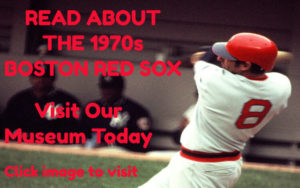How The 1986 Boston Red Sox Won The AL East
They’re remembered for a fatal error that cost them the World Series. Kinder observers will also remember that they had a miracle comeback of their own in the American League Championship Series. But before the 1986 Boston Red Sox could do any of the above they had to win the AL East and that, in of itself was a surprise.
Boston had not won the AL East since the pennant year of 1975, and they had not made a serious run at it since the heartbreak of 1978 and Bucky Dent. They had not won 90 games since 1979. The Red Sox hadn’t been a bad team by any stretch—they still won more than they lost—but they had ceased to be a relevant team outside of New England.
John McNamara, who managed the Cincinnati Reds to a division title in 1979, had come on as skipper in 1985 and finished .500. The team was breaking in Roger Clemens and the fireballer from the University of Texas gave hope for the future. Clemens came through in 1986 with a year that was not only a breakout campaign, but also the best season of his career.
Clemens won his first thirteen decisions and finished the season 24-4. His ERA was 2.48. On April 29, at home against Seattle, he struck out twenty batters. He won both the Cy Young and MVP awards, a feat that would not be duplicated until Justin Verlander did it for Detroit in 2012. Clemens was easily the biggest reason a pitching staff not known for success and having to work in hitter-friendly Fenway Park finished fourth in the American League in ERA.
There were other good young arms. Dennis “Oil Can” Boyd was 26-years-old and posted a 3.78 ERA in his thirty starts. Bruce Hurst, a 28-year-old lefty had a 2.99 ERA. Depth was a problem but in June, the Red Sox traded utility man Steve Lyons in exchange for the great Tom Seaver. “Tom Terrific” was 41-years-old, but he had a championship pedigree that was badly needed in Boston and over 16 starts he finished with a 3.80 ERA.
An offseason trade aimed at the bullpen didn’t work out as well as planned. The Red Sox traded a reliable lefty in Bob Ojeda to the Mets as part of an eight-player deal whose highlights for Boston were young arms Wes Gardner and Calvin Schiraldi. Even though Schiraldi came on strong down the stretch—a 1.41 ERA—he still only worked 51 innings and Gardner was a non-factor. Meanwhile, Ojeda pitched well in Queens and the disparity of this trade would really be laid bare when the teams met in the World Series.
And until Schiraldi got rolling, the rest of the pen was staffed by mediocre arms. Bob Stanley, Sammy Stewart and Joe Sambito all had some great high points in their careers, but none finished with an ERA under 4.00 in 1986.
Even so, the quality of the starting pitching combined with the traditional Boston bats to make a winner. The Red Sox offense would rank fifth in the American League in runs scored and they were led by Wade Boggs. The 28-year-old third baseman hit .357 and won his third batting title in four years. He also slugged .486, peppering the Green Monster with extra base hits.
Jim Rice was 33-years-old, but the one-time AL MVP (1978) was still producing. He hit .324 and drove in 110 runs. Another veteran outfielder, 34-year-old Dwight Evans hit 26 home runs, drove in 97 runs and posted a .376 on-base percentage. Marty Barrett, the 28-year-old second baseman was coming into his own and finished with a .353 OBP.
There were disappointments in the lineup. Rich Gedman did not have a good year behind the plate, centerfielder Tony Armas didn’t age as well as Rice and Evans, and shortstop Rey Quinones was a big offensive liability. The Red Sox made an August deal to get a modest upgrade at short in Spike Owen and added Dave Henderson to the outfield, an acquisition that would be huge dividends in October. But the biggest and best trade the 1986 Boston Red Sox made came just before spring training ended.
It was the Friday before the Final Four began, and while the nation might have been thinking about Louisville, Duke, Kansas and LSU, the Red Sox were talking deal with their ancient rivals in the Bronx. Each team had a productive designated hitter—lefthanded hitting Mike Easler for the Red Sox and righthanded hitting Don Baylor for the Yankees. Each would be better served by switching parks, Easler to hit at Yankee Stadium’s short rightfielder porch, Baylor to take aim at the Green Monster.
In another era, ownership of these same teams had discussed swapping Joe DiMaggio and Ted Williams for the same reasons, and according to legend that seems well-founded, even agreed to it during a heavy night of drinking before recanting in the morning. Easler-for-Baylor wasn’t quite on the same level, but it had an impact.
Easler remained a productive player in New York, but Baylor had a clubhouse presence that would be invaluable for a Red Sox team living in a city haunted by its history. And he was awfully good at plate, hitting 31 home runs and finishing with 94 RBI.
After starting the season 9-8, Boston took advantage of a long stretch of games against the weaker AL West, going 19-6. By Memorial Day, the Red Sox were 28-14 and had the second-best record in baseball behind the Mets. But Boston was only a half-game better than the Yankees in the AL East and the race looked to be on.
The Red Sox surged in the early summer and owned their division rivals. They swept a home-and-home with the Indians, going 6-0. They took two of three from defending AL East champ Toronto. They won three straight in New York, scoring 22 runs in the process and winning a Clemens-Ron Guidry showdown in a 10-1 rout.
Clemens didn’t lose his first game until early July. By the All-Star break, Boston was rolling at 56-31 and had some separation in the race, plus-seven games on the Yankees, with the Indians, Orioles and Blue Jays all hoping to make a run.
The city of Boston flew into a panic when the Sox lost 10 of 13 on a road trip against the AL West. By the end of July, the Yankees and Orioles had the lead cut under five games, while the Blue Jays and Tigers were only 5 ½ out. The Indians were 6 ½ back. It was at this time that Boston Globe columnist Dan Shaughnessy wrote that the Red Sox were the only team that could be mathematically eliminated while still in first place.
But the clubhouse, led by Baylor, didn’t panic. Having Seaver in the rotation was also a boon, and he opened a three-game series in Detroit on August 8 with a complete-game five-hitter. The Red Sox swept a series that Clemens didn’t pitch in, scoring 23 runs in the process. The race was still close, but Boston stabilized. On Labor Day, they were 3 ½ games up on the Blue Jays and 6 ½ up on the Yanks.
There were thirteen games against either New York or Toronto in the final month. New England was battening down the hatches for a fight to the finish. Instead, the completely unexpected happened and Boston took the bull by the horns.
They swept three-game sets against Texas & Minnesota and took three of four in Baltimore. By the time September 11 arrived and the big sequence of games began, the Red Sox were running away with the AL East, nine games up on Toronto and ten games ahead of New York. Even though Boston went 4-9 in those games, it didn’t matter. The Blue Jays had been swept by the Yankees, while New York struggled in two series against Oakland, enabling the Red Sox to pull away.
On September 28, the penultimate Sunday of the season, Boston clinched against Toronto. Oil Can Boyd threw a complete-game and Barrett’s three hits led an offensive barrage that produced a 12-3 win. The Red Sox were going back to the playoffs.
The most dramatic postseason in baseball history awaited the Fenway Faithful. They were driven to the brink of elimination against the California Angels in the ALCS before making a stunning climb off the mat to win it. Henderson hit a two-out, two-run homer in the ninth inning of Game 5 to give Boston a 6-5 lead when they trailed the series three games to one. The Red Sox won that game in extra innings and came back to Fenway to secure the pennant.
The World Series saw Boston take on a more familiar role, that of aggrieved victim. They won the first two games on the road against the 108-win Mets. They lost two at home, but took Game 5. With the sixth game in extra innings, Henderson hit another huge home run. Boston led 5-3 and had two outs with nobody aboard. Three singles and a wild pitch set the stage for Bill Buckner’s error and the shocking loss. They lost Game 7 in spite of grabbing an early 3-0 lead.
That’s what the 1986 Boston Red Sox are most remembered for. But they should also be remembered as the team that turned back challenges throughout the summer, blew a race open and won a division title that seemed to come out of nowhere.


